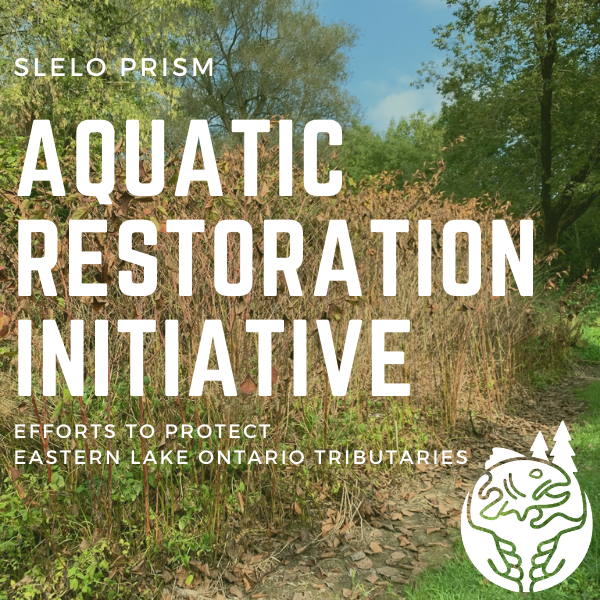This article was featured in the 2022 Winter Newsletter by Rob Williams – SLELO PRISM.
In 2020, the SLELO PRISM embarked on a three-phase effort to suppress invasive species and restore those areas to a more native composition, as part of SLELO’s new Aquatic Restoration Initiative (ARI). Phase I was to complete an assessment on the aquatic and riparian areas of Sandy Creek, South Sandy Creek, and Deer Creek. The results and recommendations of this work directly determined the next two phases. Phase II, completed in 2021, was to suppress target invasive species, including Japanese knotweed and common reed, and to begin the restoration process.
So far during phase II approximately 3.2 acres of riparian Japanese knotweed and common reed, were treated at South Sandy Creek and Sandy Creek. Following treatment, many dead stands were mechanically cut and/or removed from the site. This was followed by the first phase of restoration, where re-seeding with native seed has occurred at many of the control sites to include the following species:
- Virginia wild rye (Elymus virginicus)
- Spotted Joy-Pye weed (Eutrochium maculatum)
- River bulrush (Scirpus fluviatilis)
- Fox sedge (Carex vulpinoidea)
- Pennsylvania smartweed (Persicaria pensylvanica)
- Common soft rush (Juncus effusus)
- Dark-green bulrush (Scirpus atrovirens)
- Canada bluejoint grass (Calamagrostis canadensis)
- Fowl manna grass (Glyceria striata)
- Common sneezeweed (Helenium autumnale)
- Green-headed coneflower (Rudbeckia laciniata)
Phase III, scheduled to begin this year, will consist of continued management, planting additional native seed in the treatment areas, and beginning a monitoring program to evaluate and measure the effectiveness of this work overtime, based primarily on native species colonization in areas where these invasive species once dominated.
This multi-year project is designed to alleviate invasive species from the system and to strengthen these riparian areas to their native biology which should increase their resiliency to external stressors such as a changing climate.
More details about the Aquatic Restoration Initiative are available on our The ARI Project Page .


